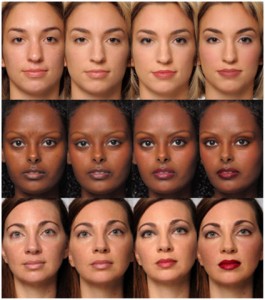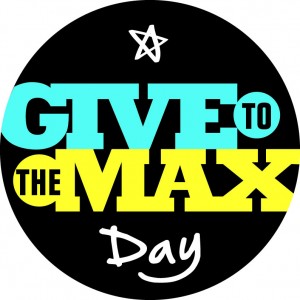Wednesday Bubble: Timeout
Back in 2009 I posted a story about a woman’s death being blamed on menopause. It seems especially poignant a day after World Menopause Day, a day unlike any others, when we put down our prejudices and celebrate everything menopause.
As my grandmother would say “oy vey.”
How about we focus on how, as women, we are constantly manipulated by ‘disinterested’ parties? How about we call “timeout?”
A bit of context…
In 2009, the BBC ran a story about a woman who committed suicide. The headline read:
“Woman’s Death Blamed on Menopause.”
“A woman who refused to take hormone replacement therapy died while suffering a menopausal episode, an inquest had heard. Margaret Drew…was killed when she walked out of her family home on to a nearby railway line and was hit by a train…There is no trigger to this at all, except hormones making her do things that she normally wouldn’t do, Dr. Carlyon [Cornwall Coroner) concluded…”
Menopause. The silent killer. Oh really? Drew’s husband claims that his wife was “delightful, lovely and friendly” 99% of the time; the other 1% she’d become “totally irrational.” Yet, she refused to try HRT, he says. On the day of her suicide, he said that his wife was “clearly angry about something.”
Something.
Obviously, the conclusion is that that the “something” is hormones. This reminds me of vintage advertising copy that conveys the simple message that a pill a day can cure all that ails, wipe away the tears, mood swings and instability so that women can “transition without tears” (or better yet, without killing themselves).
Notably, a search in the National Library of Medicine’s PubMed database turned up only one recent study specifically dealing with suicide ideation across reproductive stages. In it, researchers compared data in 8,794 women, and found an increased risk of thinking about suicide among women during perimenopause, not before or after entering menopause. These findings remained after controlling for risk factors such as anxiety and mood disorders. HOWEVER, the researchers noted that the study design did not allow them to form any definitive conclusions about the specific reasons for thinking about suicide.
Another search yielded information that the risk for a major depression increases during perimenopause, primarily as the direct result of vasomotor symptoms. The same does not hold true for women before menopause begins or once they enter menopause. Note that while major depression is a risk factor for suicide, not everyone who is depressed will actually kill themselves.
Are hormonal fluctuations the sole cause of such deep unhappiness that women want to kill themselves? Or their careers?
Let’s look at a more recent story that appeared this week in the Denver Post.
“Former Elbert County assessor blames menopause medications for crimes, is sentenced to 60 days in jail, fined $10,000”
“Elbert County Judge Jeffrey Holmes might have thrown the book at former county assessor P.J. Trostel just for her management skills alone. Instead, he sentenced Trostel today to 60 days in county jail, three years of probation and 200 hours of community service on two felony counts…In asking for leniency, Trostel and her lawyer said a variety of factors led her to make bad decisions. Those included depression, symptoms from menopause, medications and stress from family and work. “Some of the things I don’t even have an answer,” Trostel said. “I know I made terrible judgments and decisions.”
It sounds as though Trostel would have done better with different legal representation. And a sounder argument.
And while Trostel is chewing on that concept for the next six years while incarcerated, perhaps we can start to change the paradigm and focus on the ills of the Menopause Industrial Complex, disinterested parties who perpetuate societal myths that menopause is a disease that requires treatment and that as women, our attitudes, belief systems and actions are hormonally-based and driven. That we are hysterical beings who need guidance on how to find our way and fulfill our dreams, realize our paths, but only if we calm down. That we can’t hold a job down, keep a marriage intact or play nicely with others. That we need a timeout (this would entail a long, long time, by the way).
Seriously though, a timeout from the hype would be a welcome addition to the change, don’t you think?
Read More
Needles and symptoms and a pathway, revealed…more on acupuncture
Click on acupuncture in the tag cloud and you’ll know that I’ve spent a number of years examining and sharing information about important studies on this blog. In some, acupuncture has been shown to alleviate vasomotor symptoms like hot flashes and night sweats, and in others, acupuncture appears to be no better than placebo or sham needles that are placed on accurate points but not actually inserted into the skin. However, I’ve also long argued that by slightly changing the way that we conduct scientific studies in the West and allowing for individualization, observed benefits might be different. Indeed, that’s exactly what researchers have seen with ACUFLASH and you can read more about that trial here.
Less clear that whether or not acupuncture can help symptoms (for the record, I am biased and I believe that over time it can), is HOW it works. The centuries old Chinese medicine paradigm is never so apparent than with acupuncture and although I am not sure why we need to know the ‘how,’ I am fairly certain that until it is revealed, there will be a lot of researchers and health practitioners questioning its validity or utility.
So, this brings me to a wonderful pilot study in the online version of Menopause, exploring that very question: how does acupuncture work on vasomotor symptoms?
In this small trial, 33 perimenopausal and postmenopausal received traditional acupuncture, sham acupuncture or nothing over a period of 12 weeks. The active groups received three treatments per week and all the women reported having at least 7 hot flashes a day. But there’s the rub: the researchers also looked at how traditional acupuncture affected the hypothalamic-pituitary axis (HPA), the part of the body that comprises the hypothalamus and pituitary and adrenal glands, controls digestion, our immune system, mood and emotions, sexuality, and how energy is used and stored. Moreover, this part of the body reacts quite negatively to stress by releasing a hormone known as cortisol. Not surprisingly, women who have very severe vasomotor symptoms tend to produce high levels of cortisol.
What did they learn?
- Most of the benefits, (e.g. reductions in hot flashes) occurred by week five and; hot flash severity and frequency declined by 86% and 78%, respectively in both the real acupuncture and sham acupuncture groups. But while the sham acupuncture group didn’t continue to improve, the real acupuncture group did.
- Likewise, anxiety and depression improved in both of these groups, as did sleep scores.
And the “how?”
It appears, at least from this small study, that acupuncture positively affected levels of cortisol and DHEA, the major steroid secreted by the adrenal glands that affects none other than the body’s production of estrogen. Consequently, if acupuncture helps to control the HPA, and HPA affects vasomotor symptoms, then perhaps scientists have the first clue as to why acupuncture may help certain menopausal symptoms. It also opens up an entirely new avenue for novel strategies to control them.
The bottom line is that there is hope and a new direction that researchers will ideally follow. Ultimately, acupuncture may prove to be even more effective than pharmaceutical strategies for menopausal symptoms and definitely, much safer.
The jury’s still out but it seems a helluva closer to a verdict.
Read More
Makeup ‘makes’ the woman?
Can’t make this one up.
Pardon the pun but the results of this particular study, published last week in PLOS One, deserves some attention, not because it conveys a positive message but because it challenges me I know at the cellular level by confirming that as humans, we often focus on the wrong attributes. And in no gender is this truer than in women, who are often judged for what’s on the surface rather than what lies within.
Two studies conducted by Harvard Researcher and Assistant Clinical Professor at Harvard, Nancy Etcoff, PhD, were developed to examine how adorning a face with colour cosmetics affects how other individuals will respond. These studies were seen as a natural extension of prior research that has shown that facial beauty influences first impressions and increases beliefs that the beautiful are more socially skilled, confident, successful and even more competent.
A bit of background…
Cosmetics have had a long history of controversy and shifting cultural mores. For example, in the 10,000 BC, cosmetics were used by both Egyptian men and women to enhance their spirituality and stature. In the late 18th Century, cosmetics (along with perfumes, scented water/washes and “paints”) were banned from being used to snare a husband. Thereafter in the Victorian Era, there was a return to the natural look and the fragility of women and cosmetic enhancement was frowned upon. In more modern times and we’ve gone from painting the town red in the 1920s to au natural in the 40s back to glamour in the 50s and a return to au natural in the 70s. Today, the researchers write, “cosmetics are seen as freely chosen and morally neutral agents of beauty enhancement…reflecting the individual’s preferences and choices, and the response to their use reflects” the perceiver’s ideas about makeup use and what is says about a person’s personality, intentions and character. In other words, how you look still influences what others’ think and feel about you.
The research
Etcoff’s research findings take us one step further towards substantiating that as a culture, our priorities are seriously askew. In it, she and her colleagues asked over 200 men and women to rate the same 25 female faces (Hispanic, Caucasian or African American models) with our without color cosmetics and wearing various degrees of makeup (minimal to moderate to dramatic or more specifically, ‘natural,’ ‘professional,’ or ‘glamourous’ looks). The models were rated for attractiveness, likability, trustworthiness and competence on a 7 point scale (ranging from not at all to highly/extremely).
[Photo: doi:10.1371/journal.pone.0025656.g001]
The researchers found that when the models’ were viewed for only 250 milliseconds, makeup increased ratings of their attractiveness, likability and trust. When viewers had more time to look at the faces, only the natural and professional make up looks increased the degree to which the models were perceived as likable, professional, competent and trustworthy. Still when the researchers contrasted the glamorous look to no make up at all, the found that viewers rated the models as likable, competent and significantly more attractive; only trustworthiness was questioned.
Overall, the findings show that increased beauty can be equated with increase social power and competence and to a lesser extent, how warmly someone is perceived. And researchers say that “attractiveness has assumed increasing significance [in our culture] and wil continue to do so as long as beauty remains an unconscious proxy for status and ability.”
Proctor and Gamble’s Principal Scientist of Color Cosmetics takes this even one step further, claiming, in a related press release that “makeup is a real life tool in [the female arsenal that allows women] to effectively control the way they want to be — and are — perceived.” The message? Makeup is king in a manipulator’s toolbox. And in order to take control and be in control, women need to manipulate their image.
What happens when that image is taken away from them and they are “found out?” And truly, what messages are we sending?
The other day I ran across a trailer for Miss Representation, a documentary about how women and girls are perceived our culture and how these views are influenced by the media. I would like to suggest that perhaps, we are both the influencers and the influenced.
I guess it comes down to this one question:
What makes the woman? It’s up to all of us to decide.
Read More
Wednesday Bubble: Warn me
This week’s Bubble is straight out of the buyer beware files. Introducing Warmi ‘Better Menopause Relief.’
Warmi, according to the manufacturer website, is “a unique vegetable and fruit extract supplement. It contains 85% organic ingredients in a vegetable capsule and is 100% Vegetarian.” Moreover, Warmi provides safe, natural, full spectrum menopause relief” meaning that in a single study of 122 women, Warmi “also enhanced hormonal balance, mood, cardiovascular and bone health, vaginal dryness and intercourse discomfort — even overall quality of life. Many benefits were noted in just 30 days.”
Evidently, Warmi delivers, all that and more.
How, you ask?
Warmi’s active ingredients are:
- Gluocosinates, plant chemicals that are found in cruciferous vegetables such as cabbage, which are believed to help fight cancer and possibly, promote heart health.
- Beta-sitosterol, a substance found in plants and suggested to have properties similar to cholesterol. It is used in some European countries for benign prostatic hyperplasia (enlarged prostate) and according to the Warmi website, has been shown in laboratory animals to have some sort of weak estrogen effect that “may benefit the reproductive system.”
- Hesperidin, a flavonoid found in citrus fruits which has shown promise in laboratory animals to potentially reduce blood pressure and cholesterol and work as an anti inflammatory and produce pain killing effects. The Warmi website says that it may also ‘help bone metabolism.’ Note that this claim is based on one study done in mice, which demonstrated a decline in the loss of bone density.
So, Warmi is made up of cancer and heart protective ingredients, may alleviate pain, and…helps with menopausal symptoms? But how does it work? In the FAQ section of the product website, it says that while “The exact mechanism of Warmi is not fully understood but is believed to be associated with certain estrogen receptors.”
I’m sorry…WHAT?!
All I can think of when I think ‘Warmi’ is “warn me.” Yes, warn me that medical and scientific claims without substantiation are to be questioned, that comparisons to existing alternative strategies are difficult without well-designed research, and that unpublished, unreviewed product data are just that: unpublished, unreviewed and non-vetted.
Forewarned is forearmed.
Enough said.
Read More
Health, wellbeing and social support. Give to the Max is setting a new revolution in motion…
I spend a lot of time on this blog writing about health and wellbeing and how the foundation for the two starts (and ends) with social support. Indeed, research has shown that women’s innate ability to nurture and nourish ties, coupled with overall satisfaction with work significantly predicts wellbeing especially during midlife and over the menopausal transition. It may even affect how long we live. Nowhere is this more important than in the communities where we reside because as much as many of us complain about how busy we are, there is a deep, soul stroking satisfaction in being able to help one another.
That is why it saddens me when I witness women building one another up in the community only to tear one another down in the workplace.
A line from a wonderful article that appeared in the New York Times in 2009 acknowledged certain stereotypes continue to perpetuate bad behavior. And, that as Author Peggy Klaus so aptly wrote, “the pink elephant is lurking in the room and we pretend it’s not there.”
Klaus’ point was that rather than help build each other’s careers, women often work to derail each other, engaging in “verbal abuse, job sabotage, misuse of authority and destroying of relationships.” She cited data suggesting that this type of behavior is directed from women to women more than 70% of the time, while the men who are “bullies in the workplace,” direct their aggression equally to both genders.
She encouraged us however, not to determine the why but rather, engage one another to put an end to this type of behavior.
Here’s an idea. Let’s start by supporting and building more power, self sufficiency and emotional equity from within businesses and from the top down. In other words, why not make an effort to support female-owned/founded businesses in our communities, especially those businesses that are working to eliminate inequities and promote the very qualities that improve health and wellbeing?
I recently learned that there are several female-founded nonprofit organizations in the region where I personally live that truly embody these principles:
- Suited for Change Founded in 1992, Suited for Change provides professional clothing, career and life skills education to low-income women in order to increase employment and job retention potential. Their clientele include homeless women, survivors of domestic violence, teen mothers, senior citizens, returning citizens, and women who have overcome addiction.
- Back on my Feet DC is an organization that promotes self sufficiency of homeless women (and men) — not through provision of shelter and food — but through physical activity, i.e. a running program to build confidence strength and self esteem, and teach the value of hard work, equality, respect, teamwork and leadership.
These nonprofits are only two examples of female-founded organizations that work to build self efficiency from the ground up and the top down, helping thousands of individuals learn the value of self assurance. mutual respect and support. I can only imagine what hundreds of other organizations are likewise doing to break down barriers and build wellbeing.
Want to help me find out?
If you know a local nonprofit that could use some extra support. then you need to know about Give to the Max. And if you are ready to engage other women to learn how we can consistently build one another up, then you will want to know about Give to the Max.
On November 9, thousands of organizations and residents in the region are uniting to take part in Give to the Max Day, a one-day regional online fundraiser to support local nonprofit programs. Give to the Max provides DC, Maryland and Virginia 501 (c)(3) nonprofit organizations visibility and even a lasting web presence to conduct ongoing fundraising initiatives after November 9. Most importantly, however, it’s a fantastic way for the community to give back and to support one of the region’s most important economic drivers at a time when the economy is taking a toll on charitable giving and simultatneously creating overwhelming demands for social services. For women, in particular, it’s a great start to breaking down the barriers that are destroying us in the workplace and finding ways to improve how we treat one another and why.
However, this day is not simply about women and women-owned nonprofits; an ‘Eight Neighbors Group’ alliance of the area’s leading nonprofit and civic organizations (Center for Nonprofit Advancement, Greater Washington Board of Trade, Leadership Greater Washington, Metropolitan Washington Council of Governments, Nonprofit Roundtable of Greater Washington and the Washington Regional Association of Grantmakers) have joined forces with the online fundraiser Razoo, The Community Foundation for the National Capital Region and the United Way of the National Capital Area to insure that nonprofits have an opportunity to raise thousands of dollars in donations and grants on a single day.
But why should you care if you don’t live in the DC/MD/VA region?
Give to the Max is just a start, an incentive for other other regions around the country to take back the health of their communities and leverage the individual for the collective wellbeing. As women, we have an opportunity to engage one another to end destructive behavior — not only in the workplace, but where we live.
Health and wellbeing start from where we all dwell; the heart. Let’s Give to the Max on November 9 and set a new revolution in motion.
Read More











